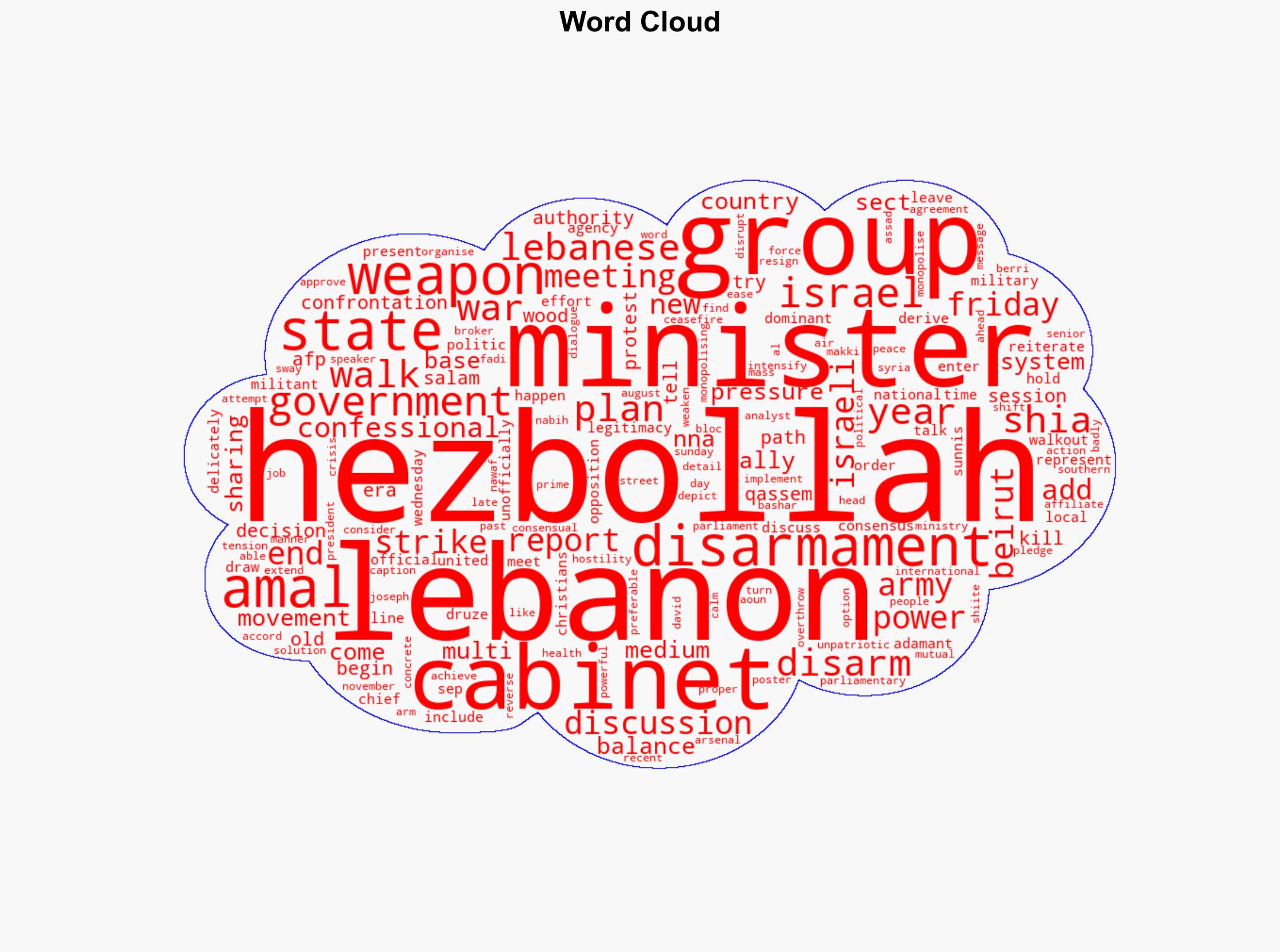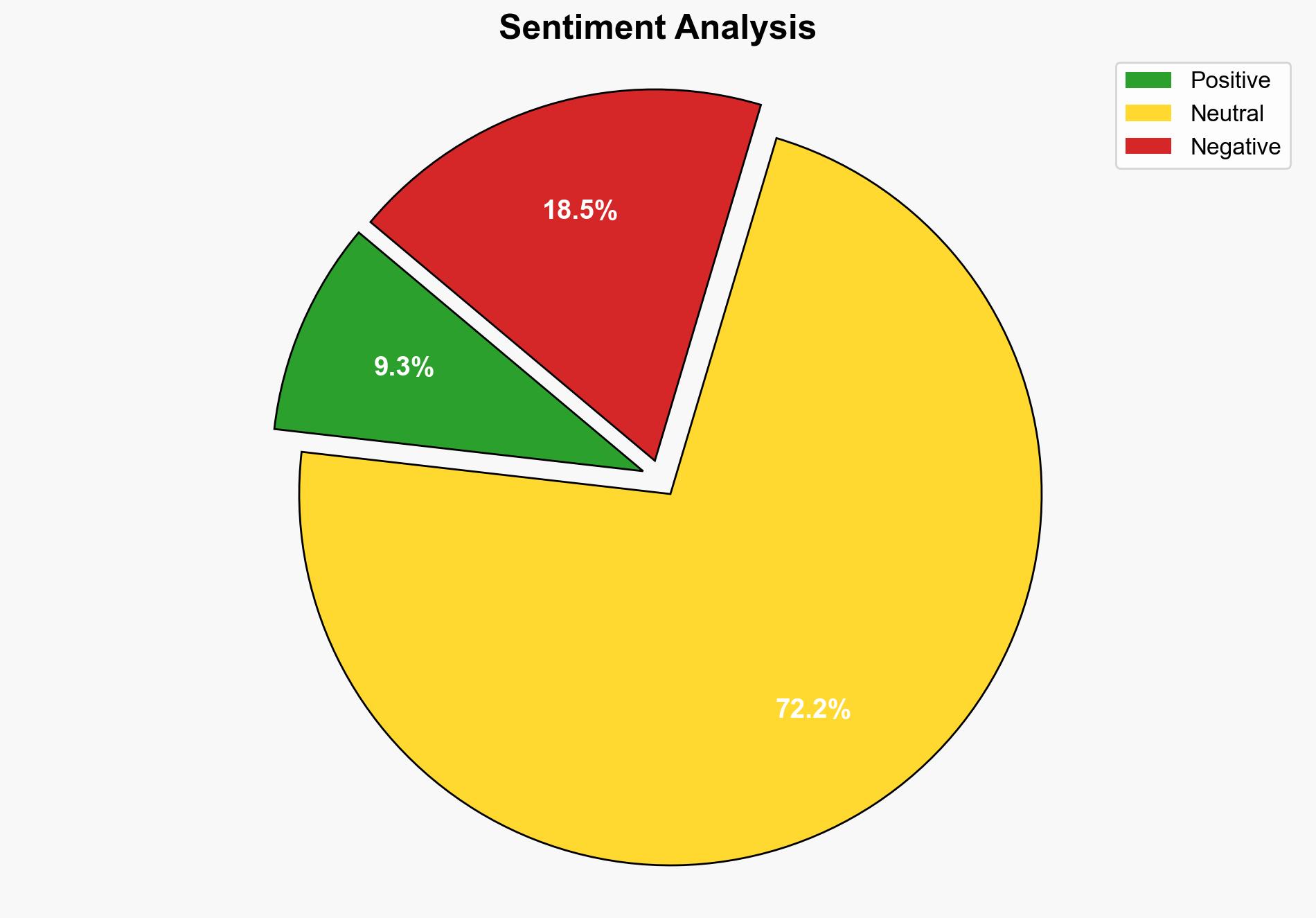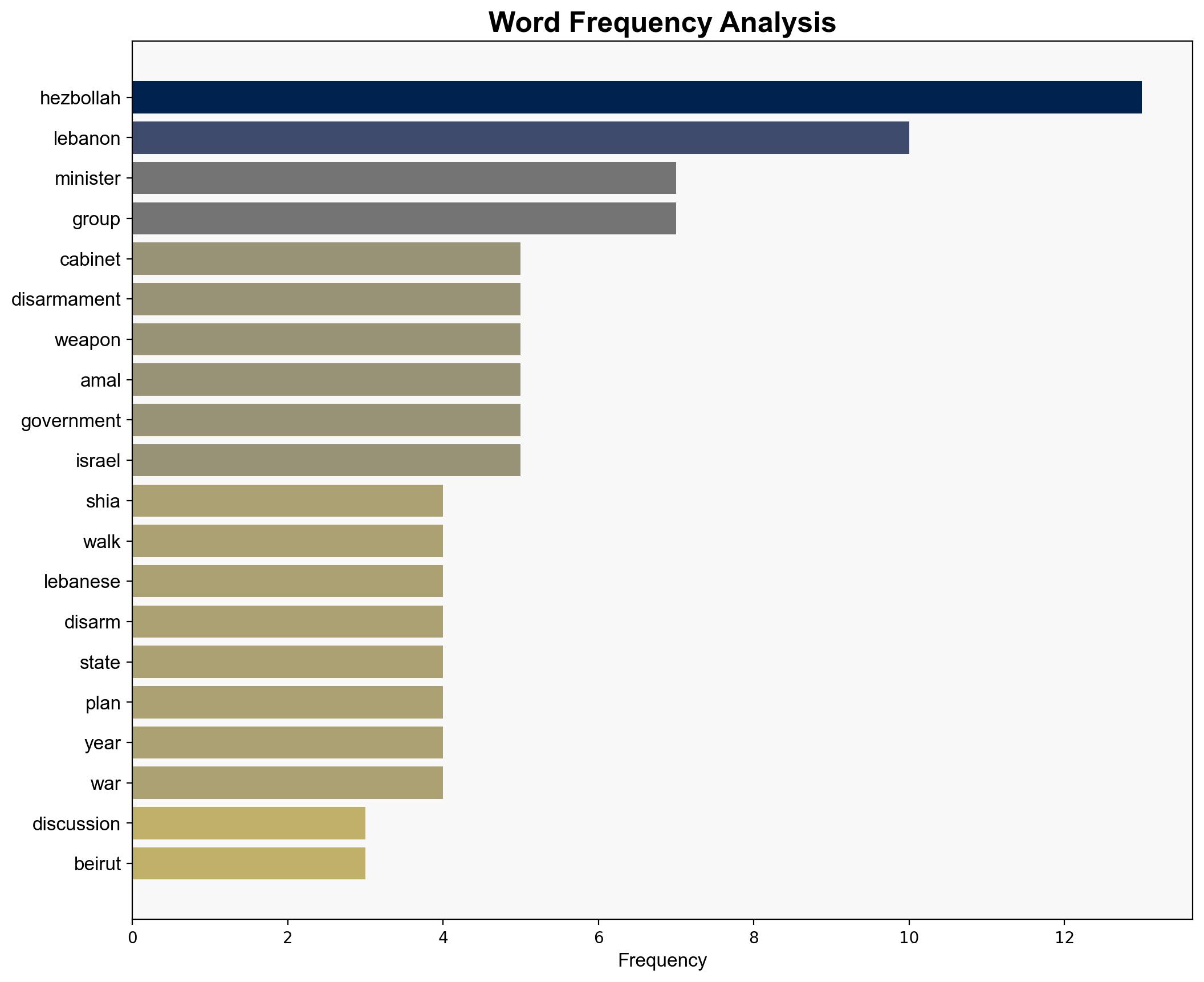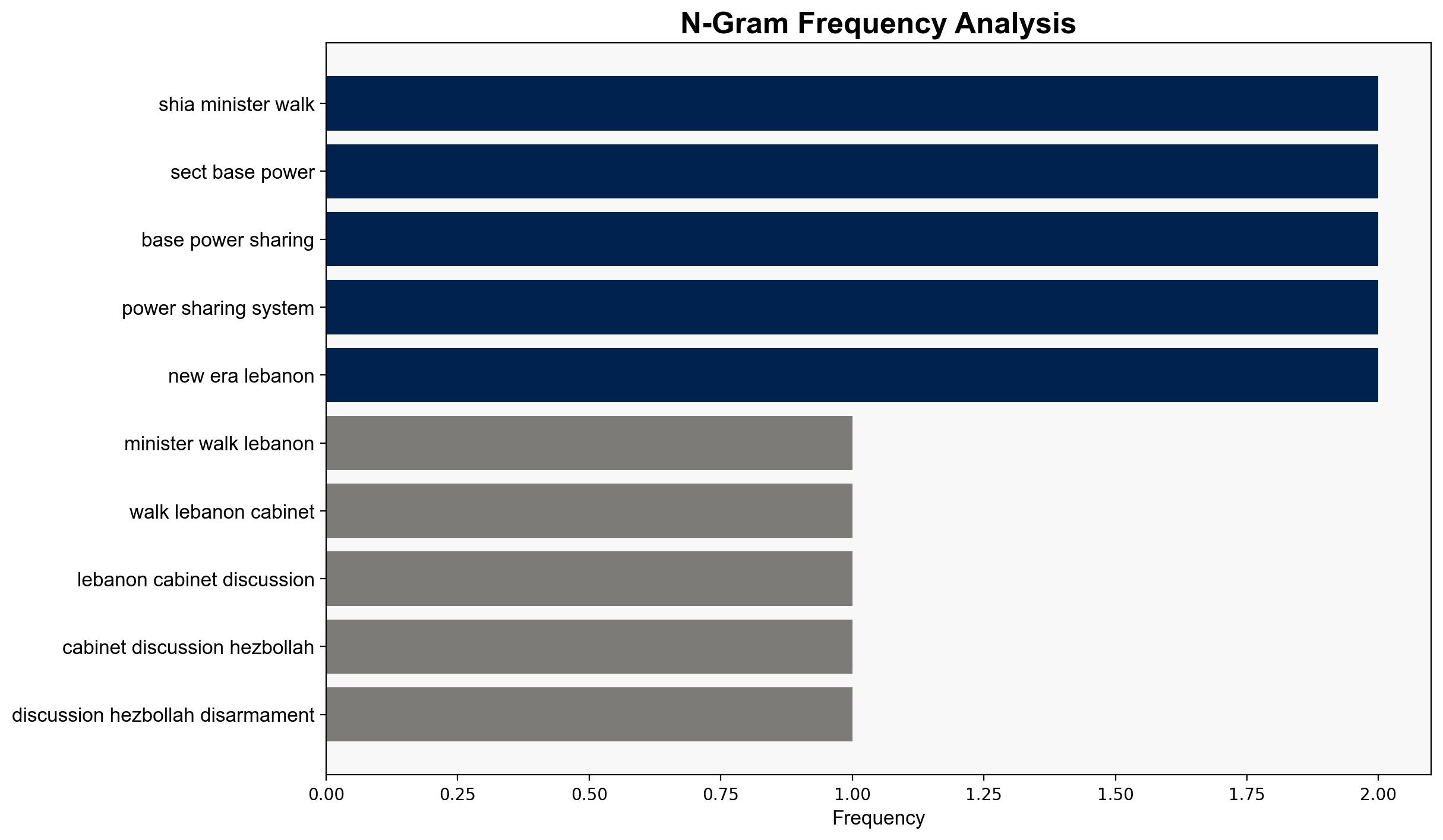Shia ministers walk out of Lebanon cabinet discussion on Hezbollah disarmament – CNA
Published on: 2025-09-05
Intelligence Report: Shia ministers walk out of Lebanon cabinet discussion on Hezbollah disarmament – CNA
1. BLUF (Bottom Line Up Front)
The walkout by Shia ministers from the Lebanese cabinet meeting on Hezbollah disarmament underscores the deep sectarian and political divisions within Lebanon. The most supported hypothesis is that the walkout is a strategic maneuver by Hezbollah and its allies to maintain their military capabilities and political influence. Confidence level: Moderate. Recommended action: Increase diplomatic engagement with Lebanese stakeholders to facilitate dialogue and explore alternative disarmament strategies that consider the sectarian balance.
2. Competing Hypotheses
Hypothesis 1: The walkout is a tactical move by Hezbollah and its allies to resist disarmament efforts and maintain their military and political influence in Lebanon. This is supported by Hezbollah’s historical resistance to disarmament and the strategic importance of their military capabilities in regional power dynamics.
Hypothesis 2: The walkout is a reaction to external pressures from the United States and Israel, aiming to demonstrate internal unity and resistance against perceived foreign interference. This is supported by recent Israeli airstrikes and international calls for Hezbollah’s disarmament.
Using the Analysis of Competing Hypotheses (ACH) 2.0, Hypothesis 1 is better supported due to consistent historical patterns and the strategic interests of Hezbollah in maintaining its military capabilities.
3. Key Assumptions and Red Flags
Assumptions include the belief that Hezbollah’s military capabilities are non-negotiable for its political strategy and that external pressures will not lead to significant policy shifts. A red flag is the lack of clarity on the Lebanese government’s capacity to enforce disarmament without exacerbating sectarian tensions. Potential cognitive biases include confirmation bias towards Hezbollah’s intransigence and underestimating the impact of international diplomatic efforts.
4. Implications and Strategic Risks
The walkout could lead to heightened sectarian tensions and political instability in Lebanon, potentially escalating into civil unrest. The risk of increased Israeli military action remains if Hezbollah’s military presence is perceived as a direct threat. Economically, continued instability may deter foreign investment and aid. Geopolitically, Lebanon’s internal divisions could be exploited by external actors, further complicating regional dynamics.
5. Recommendations and Outlook
- Engage in multilateral diplomatic efforts to facilitate dialogue among Lebanese factions, emphasizing the importance of national unity and stability.
- Explore confidence-building measures that address security concerns while respecting Lebanon’s sectarian balance.
- Scenario-based projections:
- Best Case: Successful dialogue leads to a phased disarmament plan with broad political support.
- Worst Case: Sectarian violence escalates, leading to civil conflict and regional destabilization.
- Most Likely: Continued political stalemate with intermittent tensions and external diplomatic interventions.
6. Key Individuals and Entities
– Nabih Berri: Speaker of Parliament and head of the Amal Movement.
– Naim Qassem: Hezbollah leader.
– Nawaf Salam: Prime Minister.
– Joseph Aoun: Lebanese President.
7. Thematic Tags
national security threats, regional focus, sectarian conflict, diplomatic engagement





